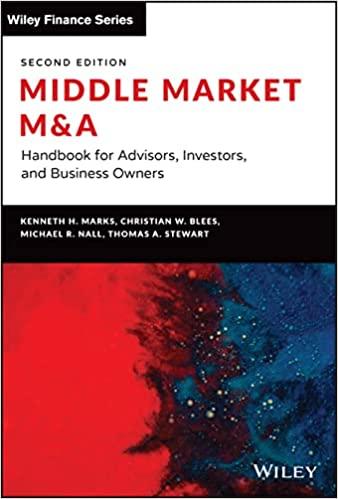Question
QUESTION 14 Large corporations owing more than $5 million may be able to restructure their financial affairs using: A. Division I proposals under the Bankruptcy
QUESTION 14
-
Large corporations owing more than $5 million may be able to restructure their financial affairs using:
A. Division I proposals under the Bankruptcy and Insolvency Act
B. The Companies' Creditors Arrangement Act
C. Division II proposals under the Bankruptcy and Insolvency Act.
D. A & B.
E. A & C.
F. B & C.
1 points
QUESTION 15
-
Mr. Biggs, a successful businessman, guaranteed the debts of his corporation, Textile Industries (Textile). This guarantee made him personally responsible when Textile ran into financial difficulties. Someone sued Mr. Biggs and Textile and won in court. Textile went out of business, and Mr. Biggs was forced to claim personal bankruptcy. Shortly before his bankruptcy, he transferred his interest in the matrimonial home to his wife and continued to live there with her. The Court reversed the transfer. Why?
A. The transfer of the house to the wife was done to defeat or defraud the creditors and amounted to a fraudulent conveyance under the Fraudulent Conveyances Act
B. The transfer of the house to the wife was done to defeat or defraud the creditors and amounted to a fraudulent conveyance under the Fraudulent Conveyances Act, and it also amounted to an attached but unperfected transaction under the provincial PPSA
C. The transfer of the house to the wife amounted to a prohibited settlement under the Bankruptcy and Insolvency Act
D. The transfer of the house to the wife amounted to a prohibited settlement under the Bankruptcy and Insolvency Act, and it was done to defeat or defraud the creditors and amounted to a fraudulent conveyance under the Fraudulent Conveyances Act
1 points
QUESTION 16
-
You are an Ontario lawyer. One day, an electrician-subcontractor comes into your office and complains. It seems as if the electrician made a contract with a general contractor who builds homes, and the electrician has yet to be paid for his services. The owner of the home has already paid the general contractor $300,000 to build the home. The electrician asks you if he may successfully obtain any money from the general contractor or the owner of the home. What do you tell him?
A. The electricians recourse is limited to the general contractor, and therefore must sue only the general contractor in court pursuant to Ontarios contract law
B. Provided that the electrician promptly registered a lien pursuant to the Construction Lien Act after completing his services, the electricians sole recourse is against the owner of the home. The electrician is entitled to a pro-rated amount of the holdback (a pro-rated fraction of $30,000)
C. Provided that the electrician promptly registered a lien pursuant to the Construction Lien Act after completing his services, the electrician has recourse both against the general contractor and the owners holdback
D. Provided that the electrician promptly attached and perfected a secured interest pursuant to the Ontario PPSA after completing his services, the electrician has recourse both against the general contractor and the owners holdback
1 points
QUESTION 17
-
Division I proposals pursuant to the Bankruptcy and Insolvency Act usually involve commercial debtors in the form of corporations or individual debtors with significant claims against them (more than _______?)
A. $250,000
B. $100,000
C. $200,000
D. $350,000
1 points
QUESTION 18
-
Jones borrows $5,000 from the bank with his mother as indemnifier and then fails to pay. The indemnity is not in writing. In which province is the mother not responsible for the $5,000 debt as indemnifier?
A. Alberta
B. British Columbia
C. Ontario
D. Most Canadian provinces
1 points
QUESTION 19
-
Jones borrows $5,000 from the bank with his mother as guarantor and then fails to pay. The guarantee is not in writing. In which province is the mother not responsible for the $5,000 debt as guarantor?
A. Alberta
B. British Columbia
C. Ontario
D. Most Canadian provinces.
1 points
QUESTION 20
-
Which of the following are correct? Please read the following to help you answer this question:
https://www.canlii.org/en/on/laws/stat/rso-1990-c-u2/latest/rso-1990-c-u2.html
A. Section 13 of the Ontario Sale of Goods Act deals with title; section 14 deals with description; section 15 deals with fitness and quality, and section 19 deals with the transfer of title
B. A rate of interest between 28-36% is always excessive or unreasonable under the Unconscionable Transactions Relief Act
C. A holder in due course is liable on default by the original drawer/maker only if properly notified of default
D. All of the above
Step by Step Solution
There are 3 Steps involved in it
Step: 1

Get Instant Access to Expert-Tailored Solutions
See step-by-step solutions with expert insights and AI powered tools for academic success
Step: 2

Step: 3

Ace Your Homework with AI
Get the answers you need in no time with our AI-driven, step-by-step assistance
Get Started


